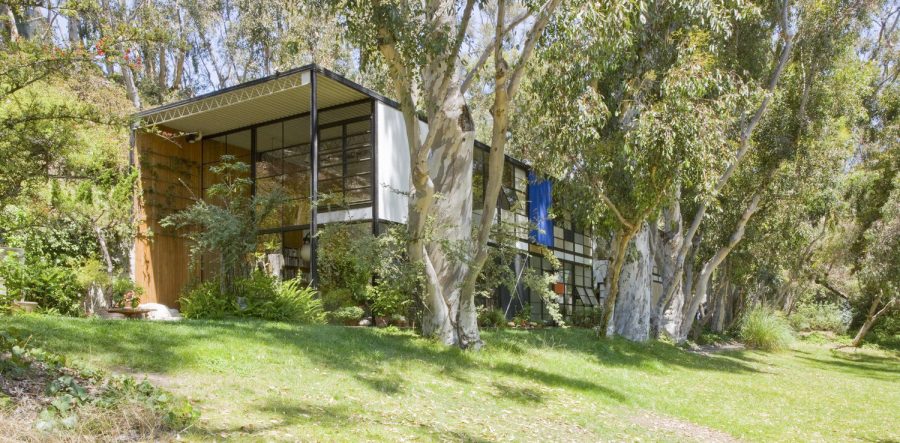
The Eames House (also known as Case Study House No. 8) sits at the far end of a meadow that overlooks the Pacific ocean. The meadow is rare for this part of California— it’s serene, lush and green.
Bordering another part of the meadow is a row of eucalyptus trees, planted by Charles and Ray themselves. Upon seeing the lively landscape that surrounds the Case Study House, one guest remarked “the Eames House is the only place in LA where you can experience the seasons.”
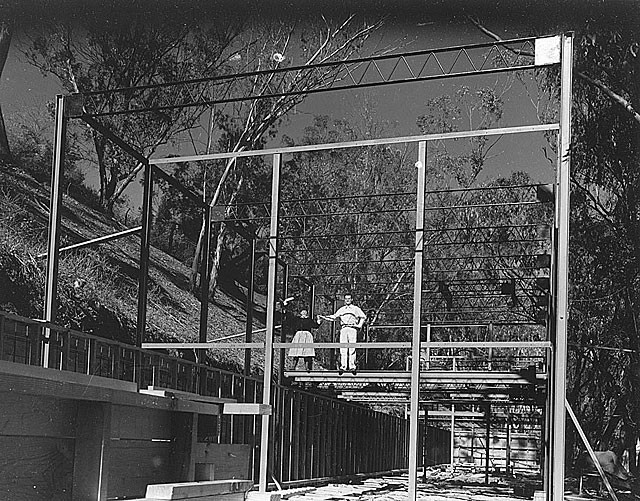
The Story of the House
Impressions like those were precisely the Eames’ intentions. Their 2-part home was originally going to sit across the meadow like a bridge, but after the couple came to love the space, they realized they wanted their home to be more integrated with the landscape, instead of dominating it.
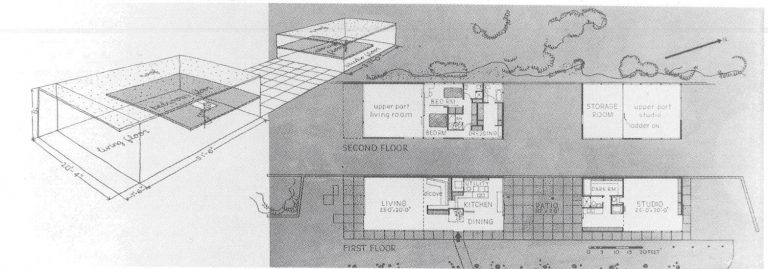
The ‘Bridge House,’ as it was first called, got its start in 1945, when Charles Eames and close friend Eero Saarinen began designing it. The home was part of the ‘Case Study House’ program, an ambitious idea set forth by Arts and Architecture Magazine that had architects create “progressive yet modest homes” that were fit for humanity’s place in the modern world.
However, due to a post-war shortage of steel, construction wasn’t able to begin until 1949. The Eameses moved in Christmas of that year, and remained in the house until their death.
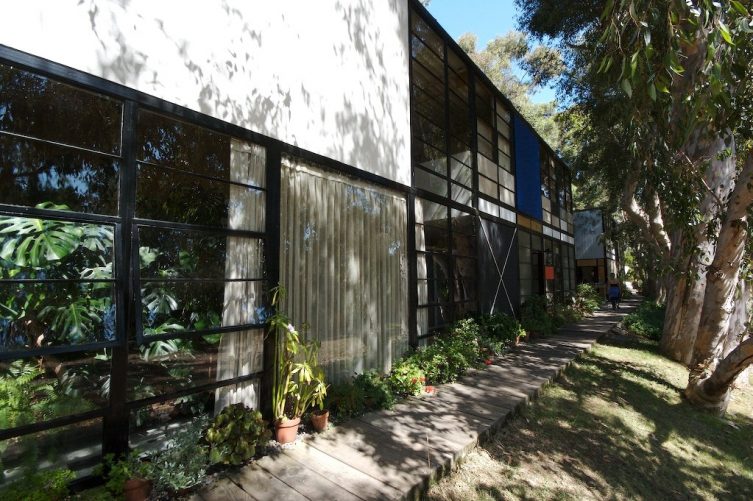
The Design of the House
The Eames House is actually made up of two different glass and steel rectangular structures— one is the house and the other a studio. The structures are both two stories tall and their exteriors are covered in black-painted grids.
Inside the grids lie a number of multicolored and textured insets. There are glass pieces in various shades of translucency, colorful cemestos and stucco pieces, and even some aluminum! As part of the Case Study House program, the home was largely built with standard components so that it was accessible and able to recreated by the average American.
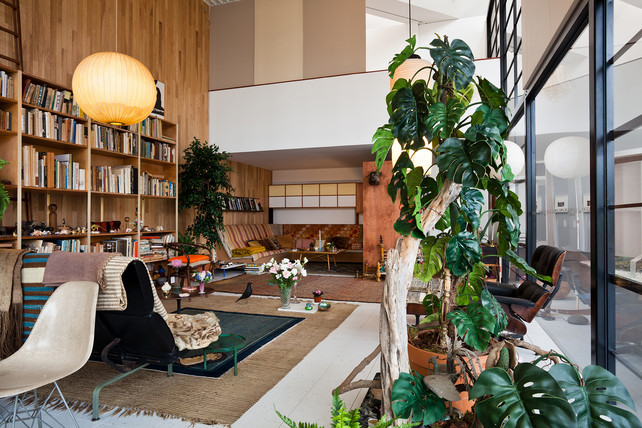
Behind the exterior walls of the Case Study House lie a flexible and dynamic interior. The Eames didn’t want any strict divides between public and private space—one of the bedrooms even overlooks the living space!
Both the living room and the studio space were designed to meet whatever need may arise. Charles called the living room “a large unbroken area for pure enjoyment of space in which objects can be placed and taken away — driftwood, sculpture, mobiles, plants, constructions, etc.”
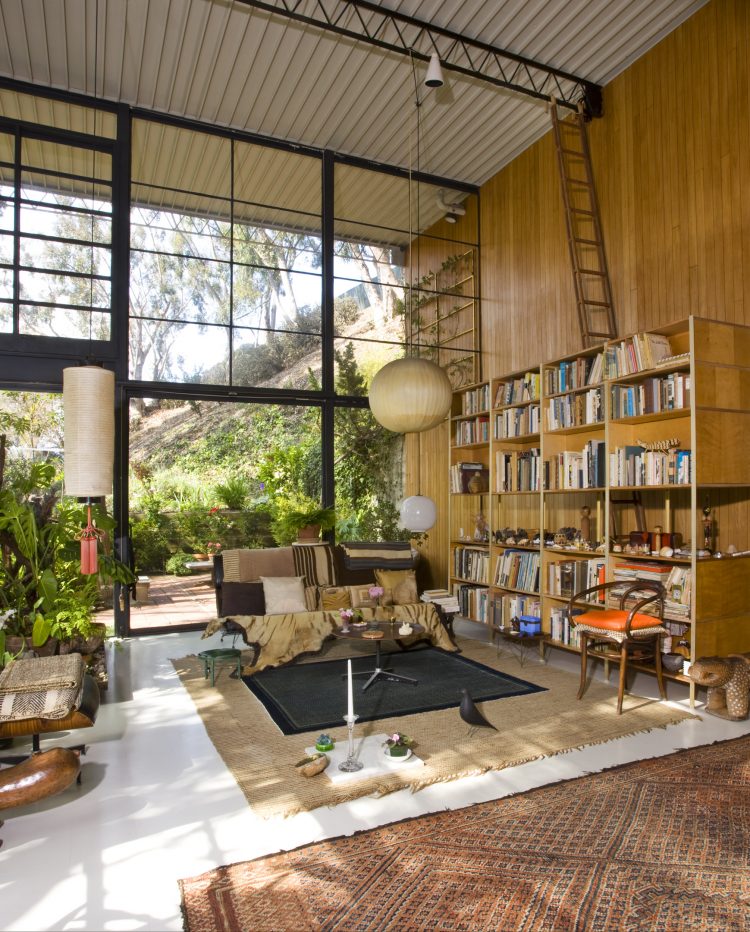
But though the exterior of the home is modern and dramatic, the home could never be called cold or pretentious— the inside of the house is warm and inviting, thanks to the natural light reaching in from the inside and the down-to-earth yet striking furnishing of the Eameses.
The Eames House sits on three acres of land at the top of a bluff near other Case Study homes.
The Future of the House
Today, the Eames House is carefully maintained by the Eames foundation and was designated as a National Historic Landmark in 2006. In 2012, the Getty Conservation Institute pledged $250K to preserve it for future generations. The home can be toured today and sees over 20,000 visitors annually.

Learn about another famous Mid Mod building, the Salk Institute, here! And of course, don’t forget to follow us on Instagram, Facebook and Pinterest for more Atomic Ranch articles and ideas!












